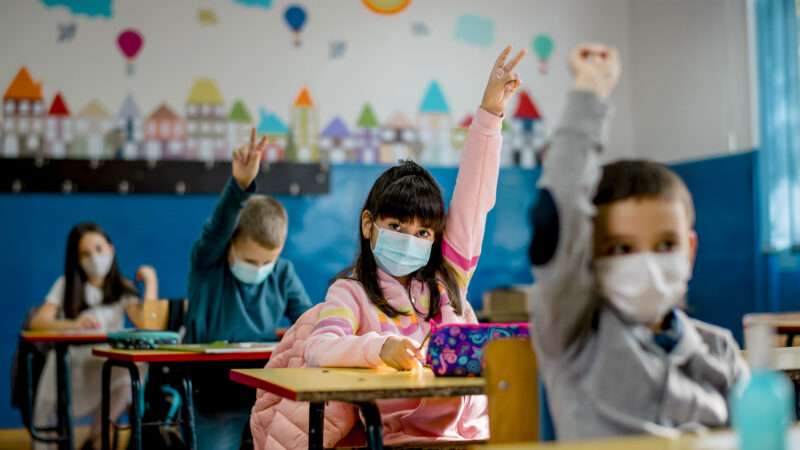
Despite receiving record amounts of federal aid during the COVID-19 pandemic, American schools still failed to prevent dramatic learning loss among students. This should be far from surprising.
Contrary to popular belief, increased educational funding doesn’t correlate with higher-quality schools. In fact, some of the worst-performing public school districts are some of the ones most flush with cash.
Over the first year of the pandemic, Congress approved $190 billion in additional funding for American public schools, the majority of it coming from the American Rescue Plan, which specifically required that schools use at least 20 percent of the additional funding to “address the academic impact of lost instructional time through the implementation of evidence-based interventions.”
However, all that funding failed to prevent disastrous educational declines. Following pandemic lockdowns, test scores among American schoolchildren plummeted. According to the National Assessment of Educational Progress, in 2022, math and reading scores among American fourth-graders reached their lowest points since 2005. For older students, ACT scores dropped to their lowest point in three decades in 2022.
While the glut of spending was justified as necessary to “help schools safely reopen, stay open, and address the academic and mental health needs of students,” flooding schools with federal dollars not only did little to get schools back open, but it was also always unlikely to actually improve educational outcomes.
School funding simply doesn’t have an established relationship with school quality. According to one 2012 report from Harvard and Stanford researchers, each additional $1,000 of per-pupil funding a school had was, on average, “associated with an annual gain in achievement of one-tenth of 1 percent of a standard deviation,” a gain so small it had no “statistical or substantive significance.”
Why doesn’t more money reliably improve results? While some interventions can improve school quality, it can often be difficult to overcome the preexisting disadvantages that many students face. For example, one report from the Brookings Institution found that almost half of all low-income children are not ready to start school at age 5. Thus, it’s unlikely that schools with large low-income populations can improve student outcomes—no matter how much federal money gets spent.
Another reason is that schools tend to not spend money in ways that actually help students. “More money can help schools succeed, but not if they fritter those extra resources in unproductive ways,” Jay Greene, a senior research fellow at the Heritage Foundation, told Reason in February. “Wasteful schools tend to hire more non-instructional staff while raising the pay and benefit costs for all staff regardless of their contribution to student outcomes.”
It’s hard to draw conclusions about how well pandemic educational funding was spent, because it’s unclear exactly what schools did with it. In fact, much of the additional funds seem to not have been spent at all, instead sitting in state coffers unused well into 2022.
Schools didn’t need more federal funding during the pandemic; they needed to open their doors. School closures are now acknowledged as a disastrous policy that unnecessarily isolated schoolchildren for months on end. From the beginning, the way to prevent learning loss was to get American children back in classrooms.
The post It's Not Surprising That Federal Funding Didn't Stop Pandemic Learning Loss appeared first on Reason.com.
from Latest https://ift.tt/vu5qHd4
via IFTTT